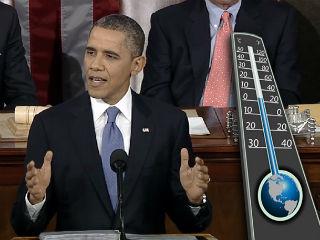It is striking that the climate issue, once a fringe concern in U.S. foreign policy circles, has become so central to two of America’s most important bilateral relationships.

President Obama made his second visit to India. As during his trip to China last year, where he signed a landmark agreement to reduce greenhouse gas emissions, climate change ranked near the top of the agenda.
by
Scott
Moore*
President
Obama made his second visit to India. As
during his trip to China last year, where he signed a landmark agreement to
reduce greenhouse gas emissions, climate change ranked near the top of the
agenda.
In New
Delhi, the two governments jointly announced new initiatives to reduce India’s
contribution to climate change and a breakthrough in a long-stalled agreement
on nuclear power.
It is striking that
the climate issue, once a fringe concern in U.S. foreign policy circles, has
become so central to two of America’s most important bilateral
relationships.
In part, this shift
reflects the Administration’s genuine concern in preventing dangerous climate
change. But putting climate change front
and center in America’s relations with the world is also smart foreign policy.
During the next few years the Obama Administration should leverage this promise
by making climate change the building block of America’s relationships not just
with emerging powers like China and India, but with countries around the globe.
Obama’s
climate diplomacy is first and foremost an attempt to persuade Beijing and New
Delhi to make ambitious actions to reduce emissions in advance of crucial
international climate negotiations set to take place in Paris at the end of
this year.
But the Administration’s
focus on climate change offers new opportunities well beyond these talks. Long an important issue in the developed
world, climate change has leapt to the top of the political agenda in developing
countries as well.
By reclaiming the
leadership role that it effectively surrendered by refusing to approve the
Kyoto Protocol some fifteen years ago, the United States has a rare opportunity
to simultaneously cement its relationships with emerging powers, address a
critical threat to stability in fragile states, and position itself at the
center of the low-carbon economy that can and will power prosperity for the
rest of the twenty-first century.
A strategic
focus on climate change in U.S. foreign policy should be built around three
basic pillars. First, Washington must
engage all countries with significant greenhouse gas emissions, which apart
from China and India include Brazil and Indonesia, as well as countries that
will suffer most from the effects of climate change, particularly Bangladesh
and Central African nations.
There is no
one-size-fits all approach to such engagement, but priorities should be
coordinating U.S. aid and technical assistance as well as linking sub-national
entities like cities, universities and civil society groups to address climate
issues at the local level, where they matter most.
This kind of multi-level engagement adds
depth to U.S. ties with developing countries, while addressing matters of
fundamental mutual concern. The U.S.
should also coordinate this activity with its European allies, many of which
have significant experience in climate diplomacy.
Second, the
United States must develop a strategy to break the nexus between climate
change, resource scarcity, and conflict in fragile states.
In areas like Yemen and the African Sahel,
changes in the distribution and availability of water, both linked to climate
change, have combined with weak governments to fuel conflict between social
groups, and helped sustain militants.
It
is no accident that ISIS fighters have repeatedly seized Iraq’s large dams, or
that Al Qaeda forces in Yemen consistently target water supply infrastructure –
control the water, and you control the population.
The U.S. must review its aid and security
assistance programs to ensure it provides adequate support to partners and
allies to adapt to water scarcity under climate change, and to prevent
militants from exploiting it.
Third and
finally, Washington must rapidly enhance cooperation with other nations on
clean energy technologies. The U.S. –
China Clean Energy Research Center, which funds joint research and development
programs in both countries, should be replicated in countries like India and
the United Arab Emirates, which is working to expand its renewable energy
sources.
At the same time, these
initiatives can be tailored to promote the interests of U.S. businesses by
incorporating public-private financing and applying intellectual property
protections similar to those widely used in international university research
collaborations.
Persuading
major emitters like China and India to take ambitious actions to reduce
emissions is a herculean task, and will require all of America’s diplomatic
acumen.
But going one step further, and
making climate change central to U.S. foreign policy, promises benefits far
beyond the negotiations set to take place in Paris at the end of this
year.
Climate diplomacy is smart foreign
policy, and climate change belongs at the forefront of America’s relationships
across the globe.
* Scott
Moore is International Affairs Fellow at the Brookings
Institution, Council on Foreign Relations




 By: N. Peter Kramer
By: N. Peter Kramer
